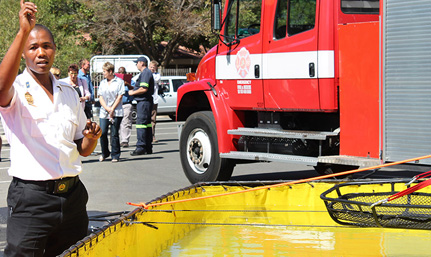|
 |
The UFS is hosting a Water Awareness Day at the Bloemfontein Campus to observe National Water Week.
Photo: Renè-Jean van der Berg
19 March 2013 |
With water being considered as a threatened resource in the world, the Health and Wellness Centre and the Faculty of Natural and Agricultural Sciences at the University of the Free State (UFS), in collaboration with Provincial Government and private stakeholders, hosted a Water Extravaganza at the Bloemfontein Campus.
The UFS has a Strategic Academic Cluster: Water management in water-scarce areas, which has a number of participating academics and postgraduate students who are all looking to combat the problems associated with water, the threatened resource, in South Africa.
Prof Maitland Seaman, Director of the cluster for Water management in water-scarce areas, says South Africans should remember that, when and where there is water, you only have temporary use of it.
He also warns that water needs to work, otherwise it will become useless.
“If water is to work, we must conserve the natural ecosystems that purify it and make it available for further use; we must use it judiciously and optimally (for agriculture, industry and domestic use); and we should not pollute our water sources.”
Prof Seaman will deliver a presentation on the Modder River as the life blood of Bloemfontein at the Water Extravaganza. Other presentations will be on fracking, water-related disasters and the water situation in Mangaung.